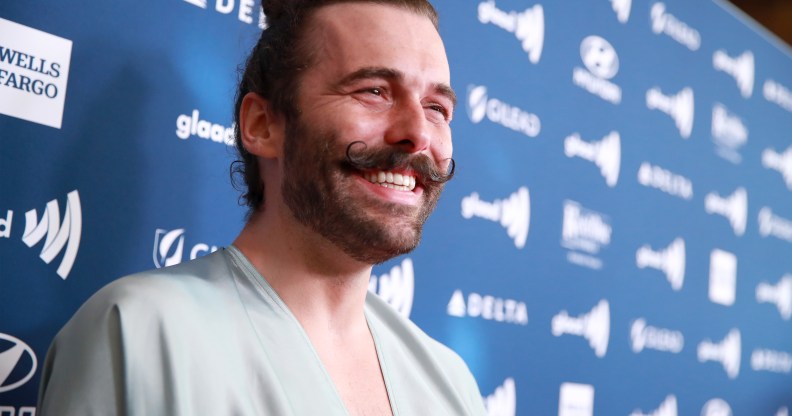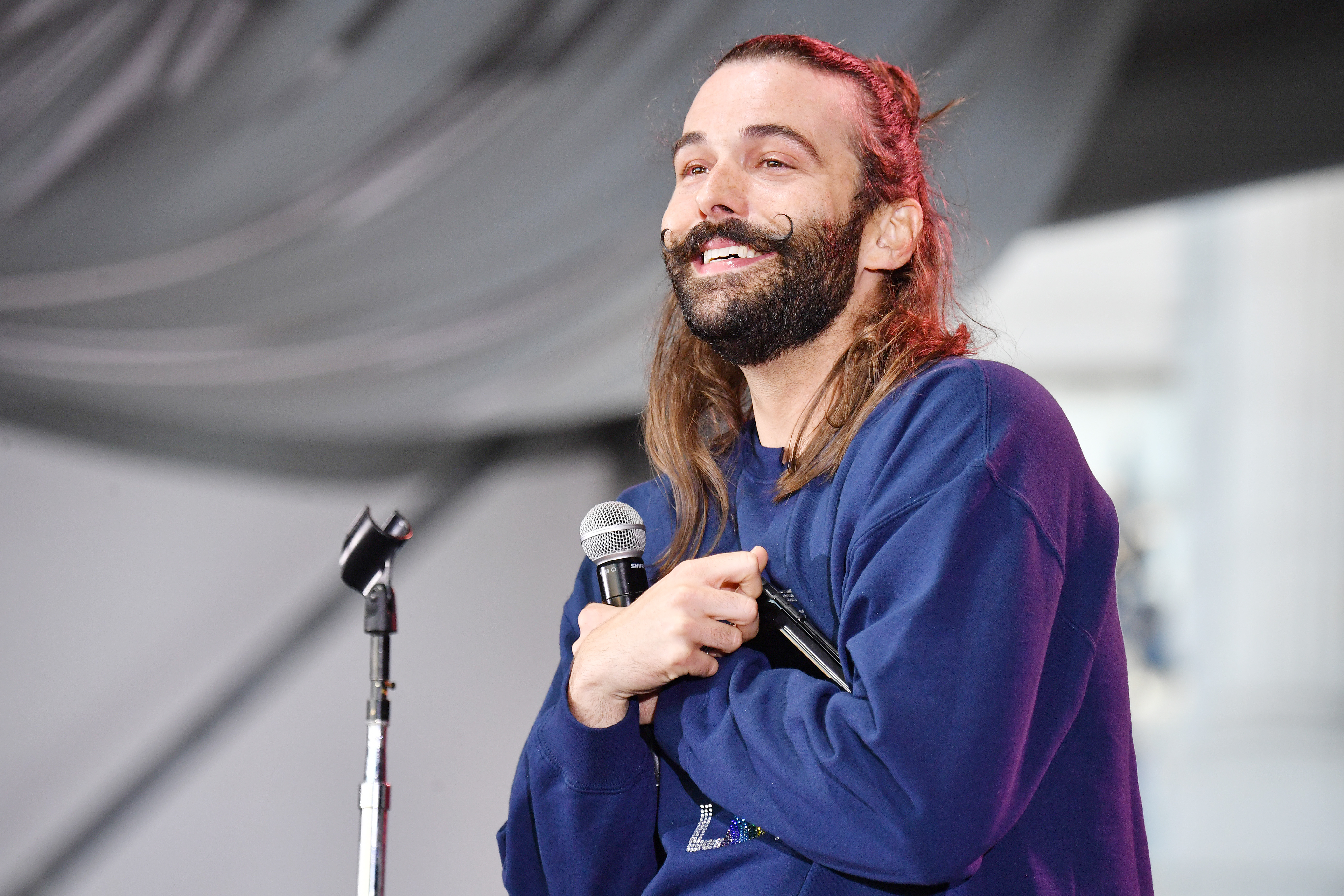Jonathan Van Ness reveals there were protests when Queer Eye visited his old school

Jonathan Van Ness attends the 30th Annual GLAAD Media Awards. (Rich Fury/Getty Images for GLAAD)
Jonathan Van Ness attends the 30th Annual GLAAD Media Awards. (Rich Fury/Getty Images for GLAAD)
Jonathan Van Ness has revealed that there was more to the story when the Fab Five visited his old high school in a Queer Eye season four episode.
Van Ness opened up yesterday about living with HIV, just one of the difficult topics he will cover in his new memoir Over The Top. He also said that he had struggled with drug addiction and had been sexually abused as a child.
Although Van Ness had a difficult childhood, in the season four episode in which he returns to his home town of Quincy, Illinois, to makeover his arts teacher Cathy Dooley, he appears overjoyed to be back.
As a former member of the high school cheerleading team, he joins the current team in a performance for students who cheer him on.
But he told The Guardian that while Dooley was one of the teachers who made him feel comfortable, the episode did not tell the whole story.
He said that weeks before the Queer Eye cast came to Quincy, permission slips for parents to sign to allow their children to be on camera caused protests, organised by a local pastor who was also a “family friend.”
Van Ness said: “He sent a letter to the newspaper that blasted the normalisation of LGBTQ culture, and said we should not be rolling out the welcome mats at a public school.
“It was just a really nasty letter. This was someone who was like a family friend, someone I’d known for a very long time.
“I don’t think we’ve come as far as I wished and hoped that we had.”

Jonathan Van Ness revealed that he is a “member of the beautiful HIV-positive community.” Jeff Kravitz/FilmMagic for Clusterfest)
Jonathan Van Ness wants to “humanise and normalise” living with HIV
When Van Ness came out as HIV-positive yesterday (September 21) in an interview with The New York Times, adding that it was an important issue to talk about because the Trump administration helps stigma “thrive.”
He told The Guardian: “It occurred to me: what if everything I’ve ever been through was preparing me for this moment – to be strong enough to share this, and to share it on my own terms.
“Part of that for me is to process what’s happened, but the bigger part is that I wanted to do something to move the conversation forward in a meaningful way around HIV/AIDS, and what it is to live with HIV, and to humanise and normalise a lot of the things I talk about.”

